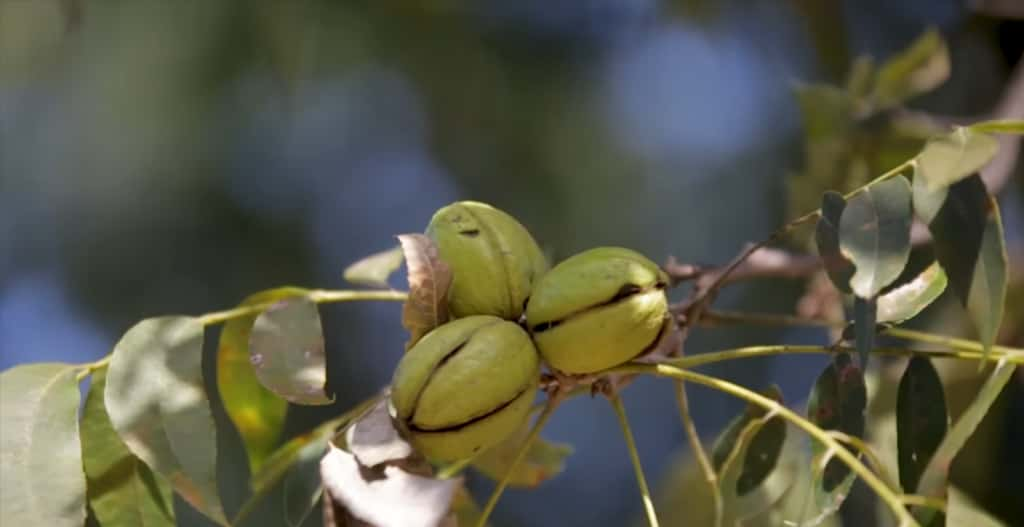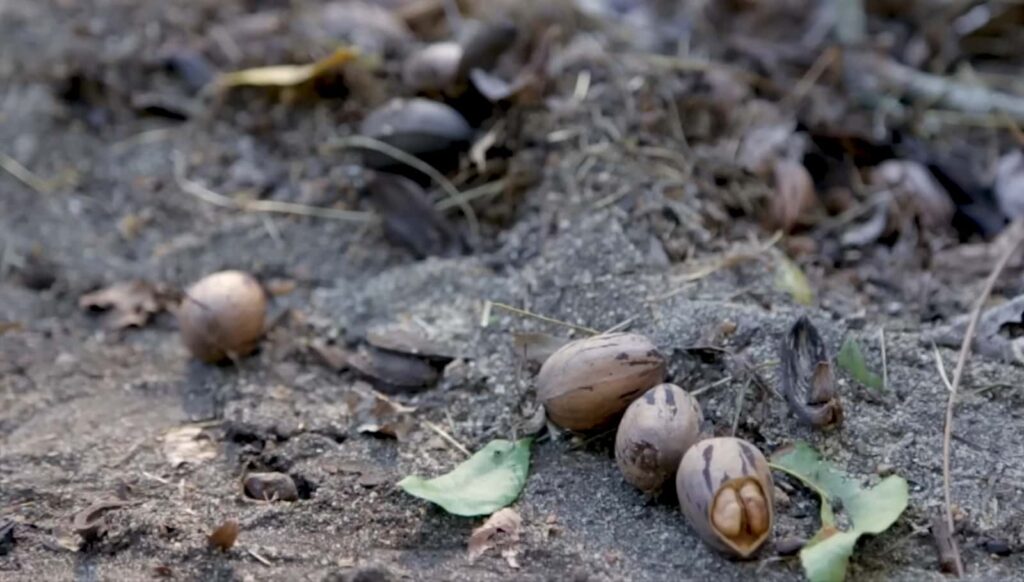When planning to cultivate pecan trees for their nuts, it’s crucial to understand the timeline for nut production, which varies widely. This discussion will illuminate the timeframe required for pecan trees to yield their first harvest.
Typically, the maturation period for pecan trees before they begin nut production ranges from 2 to 10 years. Grafted varieties tend to produce nuts within 4 to 8 years, while those grown from seeds may take a decade or more. The rate of growth and the onset of production are heavily influenced by environmental conditions such as climate, exposure to sunlight, and the fertility of the soil. Examining the timeline of pecan tree cultivation opens a gateway to understanding the temporal nuances in agriculture, mirroring the meticulous approach outlined in the guide dedicated to maximizing garlic yields per acre.
Although it may take years for pecan trees to mature, their nuts are a valuable commodity, sought after for both their flavor and nutritional benefits. Now, let’s delve into the specifics of what influences their growth and nut production timelines.
Maturation Timeline and Benefits of Cultivating Pecan Trees
When embarking on pecan tree cultivation, it’s essential to note that these trees typically begin to yield nuts between 2 to 10 years after planting. As they mature, pecan trees can attain towering heights of 70 to 100 feet with a canopy spread reaching 30 to 50 feet.
In the initial 5 to 10 years, pecan trees exhibit robust growth, which tends to decelerate as they transition into nut production. With appropriate care, these trees can have an extensive productive lifespan, potentially spanning centuries.
It’s advisable to opt for grafted pecan varieties due to their earlier fruiting timeline, usually between 4 to 8 years, compared to over a decade for seedling trees. Grafted trees provide several benefits, which include:
- Enhancing Yield Through Grafting: Grafting merges the best attributes from two distinct trees, creating a hybrid that not only grows more robustly but also yields an increased quantity of nuts;
- Increased Resistance to Disease: Pecan trees face threats from afflictions like pecan scab, which can severely impact nut production. Grafted trees, however, are typically chosen for their robust disease-resistant qualities, offering a safeguard against the spread of disease within your pecan grove;
- Yield Consistency: Through grafting, a tree inherits a stable genetic profile, leading to more reliable and uniform nut production year after year;
- Selection for Superior Nut Quality: The technique of grafting is instrumental in propagating specific pecan varieties renowned for their exceptional nut quality, thus ensuring consumer appeal and market value;
- Adaptability to Diverse Conditions: Grafted pecan trees, thanks to their compatibility with various rootstocks, are often more resilient to a range of soil and climatic conditions, enhancing the likelihood of success in different agricultural zones.
The planting of pecan nuts can contribute to genetic variation among seedlings, thereby slowing the tree’s growth. To ensure the best possible growth, it is advisable to opt for grafted trees. Nonetheless, the overall production of pecan nuts remains subject to various factors, including the age of the tree, the specific variety of pecan trees being cultivated, the pollination process, and a range of climate and environmental elements. These factors will be further discussed below.
Influences on the Fruit-Bearing Capacity of Pecan Trees

The Significance of Tree Age in Pecan Tree Production
The productive life of a pecan tree is intrinsically linked to its age. While pecan trees typically commence nut production 4 to 6 years after planting, the span for initial production can range from 2 to a full decade. One of the remarkable attributes of pecan trees is their longevity in fruiting, with the potential to provide nuts for over a century, promising a legacy of harvests for generations to come.
Varietal Influence on the Production Timeline of Pecan Trees
Nut-bearing timelines in pecan trees are also variety-dependent. Certain types may yield nuts sooner, while others mature more slowly. Before planting, it is essential to investigate the array of pecan varieties, considering their growth and production rates, and determine which are best suited to the environmental conditions of your region to achieve the best possible growth and yield outcomes.
The “Pawnee pecan” variety has recently gained favor due to its accelerated nut production compared to other varieties.
The Impact of Climate and Environmental Factors on Pecan Tree Production
The production of pecan trees is significantly impacted by climate and environmental conditions. To thrive, pecan trees necessitate an optimal combination of climate, sunlight, space, and soil quality. Typically thriving in hardiness zones 5-9, these trees require a specific number of chilling hours to yield fruit.
Ensuring your tree receives ample sunlight and is planted in well-draining soil is crucial for promoting robust tree growth and achieving favorable nut production.
Enhancing Nut Production Through Effective Pecan Tree Pollination
Pecan trees need cross-pollination from other pecan varieties to bear fruit, as they cannot pollinate themselves. Insufficient pollination can lead to a poor yield or even a complete lack of nuts. Being wind-pollinated plants, pecan trees feature distinct male and female flowers on the same plant.
Cross-pollination between different pecan tree varieties can significantly bolster both the quality and volume of the nut harvest. To optimize pollination and subsequent fruiting in your pecan grove, consider the following approaches:
- Attract and sustain pollinator populations, particularly bees, during the blooming season to enhance pollination efficiency and secure a robust pecan crop. Exploring the synergy between pecan trees and bees can be insightful;
- Plant diverse, compatible pecan varieties within a reasonable distance from one another to facilitate cross-pollination;
- Opt for grafted pecan trees which tend to have improved pollination synergy compared to their seedling counterparts and are more consistent in yielding a high-quality crop.
Useful Tips for Pecan Orchard Owners
Cyclical Yield Patterns in Pecan Tree Cultivation
Pecan trees are known for their alternate bearing tendencies, often yielding a substantial harvest one year and a smaller one the following year. This natural rhythm is affected by several elements, including water availability, nutrient levels, and local weather conditions.
Implementing consistent care practices, like appropriate pruning and meeting the trees’ yearly nutritional needs, can help mitigate the impact of alternate bearing.
Selecting the Ideal Pecan Variety
Pecan tree varieties vary in disease resistance, vulnerability to zinc deficiency, and nut production adaptability to specific climates.
Seeking guidance from regional agricultural extensions can be valuable in choosing the pecan variety best tailored to your locale. The preferred soil for pecan trees is typically sandy or loamy; hence, matching your soil type to the pecan variety is crucial for optimal growth.
Minimizing Transplant Shock in Pecan Trees
Minimizing transplant shock in pecan trees is a critical aspect of ensuring their health and productivity, especially when transplanting mature trees as a method to expedite the commencement of full nut production. Mature pecan trees are often preferred for transplanting due to their closer proximity to the production phase compared to saplings. However, the process of transplanting can be quite stressful for these trees, primarily because of the significant root loss they endure during the move. This root loss can severely impact the tree’s ability to absorb water and nutrients, thereby affecting its overall health and productivity.
To effectively minimize the stress of transplant shock, several key strategies should be employed. First and foremost, maintaining root moisture during the entire transplanting process is essential. This involves ensuring that the roots are kept damp during the extraction, transport, and replanting phases. Following transplantation, it is crucial to provide ample watering to the tree. This helps in reestablishing the root system and supports the tree in its new environment.

Assessing the Financial Viability of Pecan Tree Farming
Assessing the financial viability of pecan tree farming involves a thorough and meticulous evaluation of several factors. Pecan trees, known for their extended maturation period, generally start bearing nuts in a timeframe ranging from 2 to 10 years. This maturation period is critical as it impacts the initial years of yield. Furthermore, the yield of pecan trees is characteristically inconsistent, often alternating between heavy and light harvests each year. This variability in production needs to be taken into account when forecasting potential income.
In addition to the production timeline and yield patterns, potential growers must consider the long-term financial commitment required for successful pecan tree cultivation. This includes ongoing expenses such as fertilization and pruning, which are essential for maintaining tree health and maximizing nut production. Evaluating these costs against the projected income from nut sales is crucial in determining whether pecan farming is a financially viable option for your property. This assessment should encompass a comprehensive analysis of both the upfront investment and the long-term maintenance costs, balanced against the expected returns over the lifespan of the pecan trees.
Conclusion
Raising pecan trees is indeed a long-term commitment rich in rewards. Understanding the growth timeline of pecan trees, the advantages of opting for grafted trees, and the role of cross-pollination paves the way for fruitful output. By knowing the factors that influence nut production and how to mitigate challenges like the alternate bearing phenomenon, you can expect to enjoy a bountiful harvest. So, while the journey may be long, with patience, good care, and knowledge, your pecan trees can provide you with delicious and nutritious nuts for many generations to come.